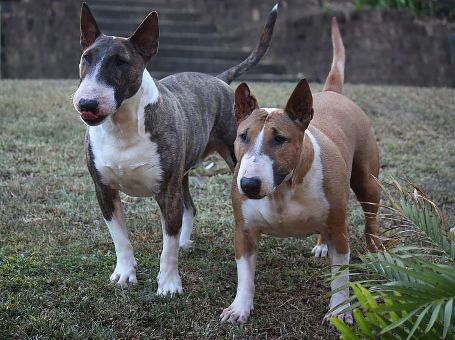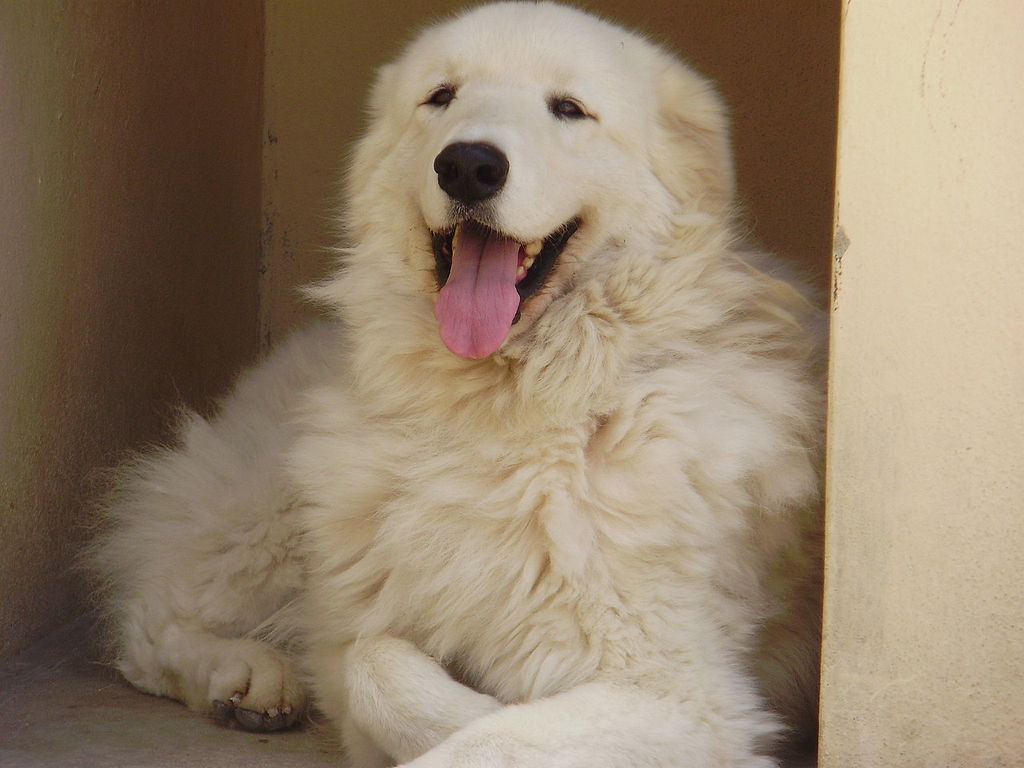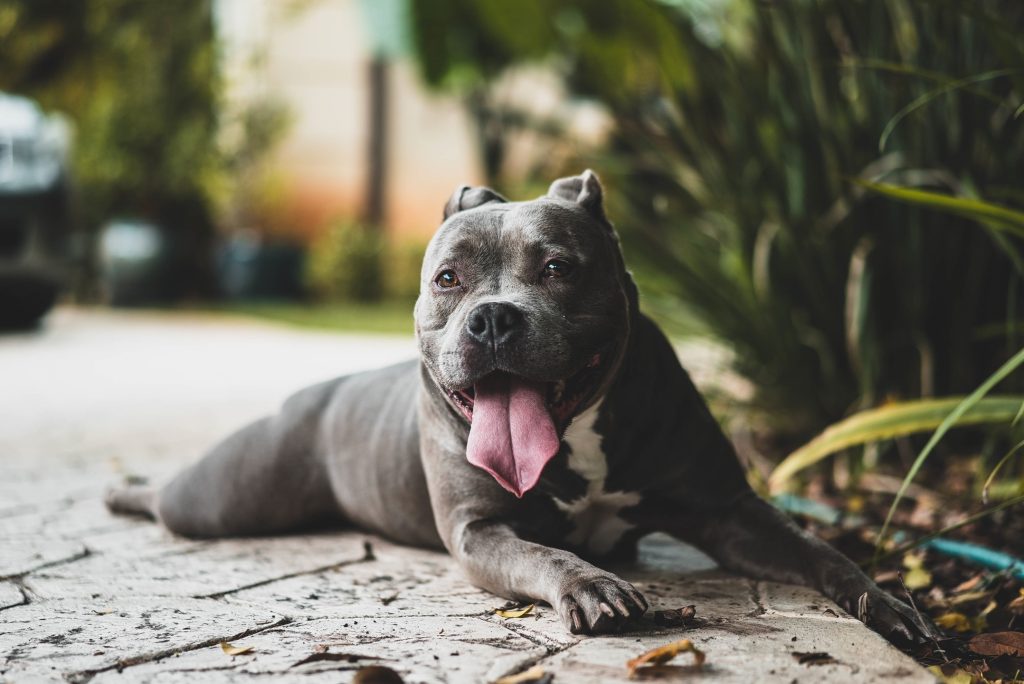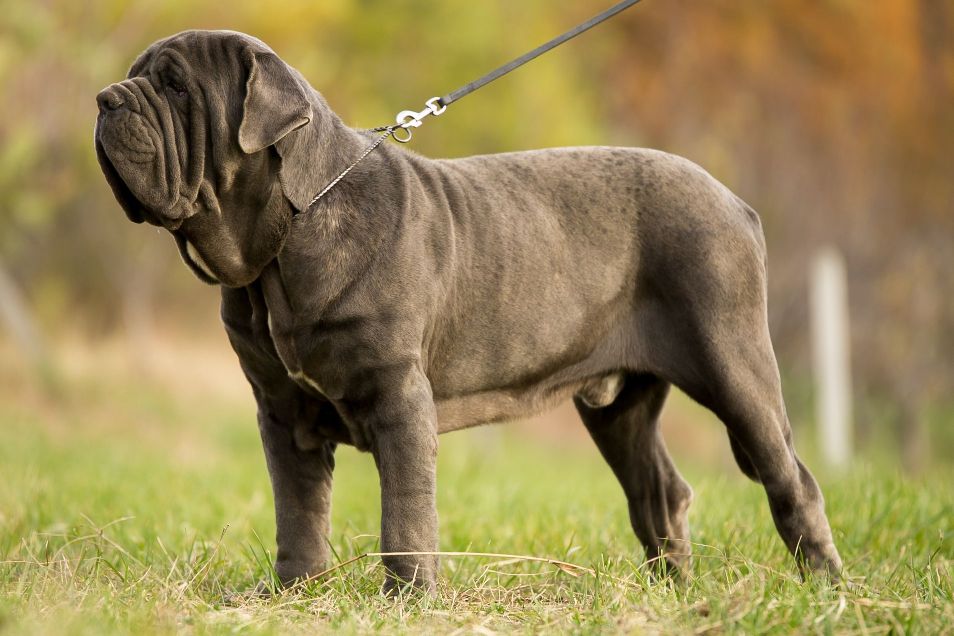Dogs and humans have coexisted for centuries – at this point, many of us couldn’t imagine life without the other. Usually, we think of pet dogs as cute, cuddly, loyal companions, but not all dog breeds were created equal. Over the years, some dogs have been bred for specific purposes, like fighting or hunting, that may make them more dangerous and prone to aggression. Many countries have responded by banning or restricting ownership of certain breeds.
As any animal lover knows, responsible dog ownership is essential to ensure the safety and wellbeing of both humans and dogs. If you’re thinking of adding a loyal companion to your life, understanding which dog breeds are restricted or banned, and why, is an important first step. Similarly, it’s important to be aware of country-specific laws if you’re planning to travel with your canine, to avoid landing you or your pooch in trouble.
Read on to learn about dog breed restrictions around the globe.
Table of Contents

Understanding Banned and Dangerous Dogs
In general, countries introduce laws that restrict, ban or regulate the ownership of specific dog breeds based on historical incidence of dog bites and attacks.
Breed-Specific Legislation (BSL) is the umbrella term given to any legislation that restricts the ownership or import of specific dog breeds in a given country. BSL is based on the presumption that certain dog breeds are more likely than others to cause injury or even fatality because of their particular set of characteristics. These laws aim to reduce the number of injuries and fatalities that are caused by dogs. However, BSL can vague and damaging for both dogs and owners. It can lead to hundreds, if not thousands of dogs in the ‘banned’ breed category being euthanised due to them already being in a shelter (or surrendered before legislation is actioned) and the shelter not being able to give these beautiful animals a new home due to the legislation banning the ‘exchange’ of dogs considered to be the breed. The UK’s XL Bully ban is something that may result in this happening, alongside the stigma of the bull terrier breed group being made worse.
In some cases, countries will outright ban a breed that is deemed to be high-risk. This means that you cannot legally import or keep these dogs, no matter your circumstances.
In other cases, countries might place restrictions on owning certain breeds. In these cases, there may be extra steps you need to take and requirements you must fulfil in order to legally keep a certain breed, but there are ways you can do so responsibly.
In all cases, it’s important to be aware of the country-specific laws, to make sure you and your dog are always complying with local requirements.
Dangerous Dog Laws and Restrictions: Beyond Breed Bans
Not every country has breed-specific legislation, partly due to the controversy surrounding their efficacy (more on that below). Some countries, like The Netherlands, have replaced old breed-specific legislation with more holistic dangerous dog laws that focus on intervening when individual dogs display dangerous or aggressive behaviour, enforcing measures such as training and restraints. More on that here.
The Republic of Ireland does single out certain dog breeds, but rather than ban them, they enforce restrictions intended to promote responsible dog ownership.
Other countries, like China and the USA, implement breed-specific bans and restrictions at a state or regional level, rather than taking a country-wide approach. Refer to the list below for country-specific guidance.
Legal Implications and Consequences of Owning a Banned Dog
When a country or jurisdiction places restrictions on importing, keeping, or breeding certain dogs, there will be repercussions if you are caught breaching the rules. Consequences vary from country to country, and even within countries, ranging from fines to imprisonment to confiscation of your dog. If you are trying to enter a country with a banned dog, its entry may be denied or, in worst case scenarios, your dog could be seized.
There are also consequences if your dog attacks another person or animal, regardless of breed. Again, this varies depending on local laws. In some countries, the owner of a dog that fatally attacks another person can be deemed responsible for manslaughter.
As a dog owner, it’s up to you to make sure you stay up to date and comply at all times with local regulations, to avoid any of these unwanted consequences.

Responsible Dog Ownership and Safety Measures
While responsible dog ownership might start at being aware of breed-specific bans and restrictions, it certainly doesn’t end there. Whether or not your dog’s breed is considered to be particularly aggressive, it is essential that you keep your dog’s behaviour safe and under control at all times.
Any dog, regardless of breed, has the potential to lash out under the right circumstances. This is especially true of dogs that have a history of trauma, neglect and abuse. That’s why proper training and socialisation is an essential part of responsible dog ownership, and the first step to preventing dog-related incidents.
Proper dog training is essential to ensure that both you and your pooch are equipped with the right tools for safe, clear communication that will in turn minimise the risk of aggressive behaviour. If you’re not an experienced dog trainer, taking your dog to puppy school or a more advanced regular training class is a great place to start – not only will you and your dog pick up heaps of new skills and improve your communication with each other, you’ll also get the added bonus of plenty of built-in socialisation. Win-win!
Spaying or neutering is another way to reduce the risk of aggression in some cases. It also has the added benefit of helping to control high numbers of dogs – an issue in many countries that results in the unfortunate outcome of many dogs missing out on a safe and loving home.
Another part of responsible dog ownership is being aware of – and avoiding – environmental triggers. If your dog has a tendency to be aggressive or unpredictable, you may implement measures such as keeping them away from children, always walking them on a leash, and/or using a gentle, secure muzzle when in public places. While these measures are legally enforced in some countries for certain dog breeds and types, there’s no need to wait to be told! You know your dog best, and if you’re at all concerned, it’s better to be safe than sorry.
If your dog is exhibiting aggression or you’re concerned about your dog’s behaviour, the best person to speak to is always your vet. They can help you implement a tailored behavioural intervention strategy, which may involve a combination of rewards-based training, medication, and appropriate physical restrictions, such as muzzling and fencing.
Global Perspectives and Controversies
Breed-specific legislation is based on the presumption that certain dog breeds have been bred to be aggressive and are therefore predisposed to attack, making them more likely to be dangerous to people and other pets. However, it’s important to mention that these laws are highly controversial and not everyone agrees with their premise.
Research has called into question the efficacy of breed-specific legislations, with some claiming that it doesn’t actually reduce the likelihood of dog attacks. The Netherlands actually removed their breed-specific legislations, because they were deemed to be ineffective at reducing dog-related incidents.
The controversy surrounding breed-specific legislation is closely linked to animal rights. Breed-specific legislation is often used to justify the euthanasia of pets, which is a tragedy that welfare advocates claim is not always warranted. Many people who oppose breed-specific legislation argue that aggression is a learnt, not inherent, behaviour in dogs. They claim that singling out certain breeds is arbitrary, discriminatory, and based on misconceptions.
These advocates argue that the onus should be placed on owners to be responsible for preventing incidents, regardless of their dog’s breed. This approach would see regulations imposed based on individual dogs deemed to be dangerous, rather than having blanket rules for breeds.
Not all animal rights advocates take this stance – some supporters of breed-specific legislation see banning or restricting certain high-risk breeds as a way to reduce the need for intervention further down the line, which ultimately reduces the number of animals being removed from homes and put down.
As with all aspects of responsible dog ownership, it’s important to do your own research, think critically, and ultimately decide for yourself which dog is right for you, your lifestyle, and your training skills. Regardless of restrictions, bans and other laws, it’s important that you choose a dog with a temperament that suits you and your lifestyle, and that you’re willing and able to provide the support and training that your dog needs to be a safe and respectful citizen.
Similarly, if you already own a dog that is deemed to be aggressive or dangerous, it’s up to you to take the necessary steps to ensure it is kept safe and under control at all times. No one wants to be forced to give up their beloved furry friend because of an incident that could have been avoided with proper precautions.

Banned Dog Breeds: Global Overview
Breed-specific bans and restrictions vary widely around the globe. Usually, the dog breeds stipulated in breed-specific legislation are those that have been bred for fighting, attack, or hunting over the years. These dogs tend to be muscular and heavy, with strong, wide-set jaws.
This combination of physical characteristics and temperament are thought to make these breeds an inherently higher risk to people and other animals, being both more likely to attack, and more likely to cause serious harm or even fatality if they do. You’ll notice many breeds that are consistently banned in the list below, including Pit Bulls, Japanese Tosas, and Bull Terriers.
Many countries also have legislation that allows intervention when an individual dog is deemed to be aggressive or dangerous based on its behaviour, regardless of breed.
Dangerous dog legislation is an area of law that’s constantly changing, as more research comes to light and vocal advocates on both sides of the debate make their voices heard. As a responsible dog owner, it’s important that you do your own thorough research to ensure that you stay up to date and avoid breaching any local laws.
Banned and Restricted Dogs in the United Kingdom
Under The Dangerous Dogs Act, introduced in 1991, the UK has banned a number of dogs that are deemed too dangerous for ownership. These breeds are:
- Pit Bull Terriers
- Japanese Tosas
- Dogo Argentinos
- Fila Brasileiros
It is against the law in the UK to sell, abandon, give away, or breed from a banned dog. If you do own a banned dog, the police have the right to take it away, and you may be fined or even imprisoned for breaking the law. This applies even if your dog is well behaved.
It is possible to get a Certificate of Exemption that allows you to keep a banned dog breed – you’ll need to go through a court process and prove that your dog is not a risk to others. More on that here.
XL Bullys in the UK
The UK government have decided that they will ban XL Bullys, which will be implemented in two phases.
Phase 1:
From 31st December 2023 it will be against the law to:
- Sell an XL Bully dog
- Abandon an XL Bully dog
- Give away an XL Bully dog
- Breed from an XL Bully dog
- Have an XL Bully in public without a lead and muzzle
Phase 2:
From 1st February 2024 it will be illegal to own an XL Bully in England and Wales without a valid exemption certificate.
Dogs will also have to be neutered, microchipped and when in public they will need to be on a lead and muzzled.

Breed-Specific Bans: Europe’s Approach
Europe’s approach to banning and restricting dog breeds is country-specific, meaning there are no overarching laws or guidelines for the whole of the European Union. If you’re going to be travelling between multiple countries with your dog, it’s important to check each location for specific bans and restrictions to avoid accidentally breaking a local law. Our list of dog breed regulations by European countries below is a good place to start.
Banned and Restricted Dog Breeds in Germany
Under Germany’s Dog Transfer and Import Restrictions Act, it is illegal to import or keep the following dog breeds:
- Pit Bull Terriers
- American Staffordshire Terriers
- Staffordshire Bull Terriers
- Bull Terriers
This ban also applies to dogs that are crossbred with any of the above breeds. You can apply for an exception under special circumstances, such as if the dog is a working guide dog or military dog. Similarly, tourists staying in Germany for less than four weeks may be eligible for an exemption. In both cases, expect to undertake a fairly involved application process. More on that here.
Banned and Restricted Dog Breeds in Poland
Poland has strict regulations restricting the ownership of certain dog breeds that are deemed to be aggressive. It is illegal for travellers to enter Poland with these breeds, but if you live in Poland and want to keep one of these dogs, you can apply for a permit.

Banned and Restricted Dog Breeds in Denmark
Denmark’s breed-specific dog legislation came into effect from 2010, making it illegal to keep, breed, or import the following dog breeds, including crossbreeds:
- Pit Bull Terriers
- Tosa Inus
- American Staffordshire Terriers
- Fila Brasileiros
- Argentine Dogs
- American Bulldogs
- Boerboels
- Kangals
- Central Asian Ovtcharkas
- Caucasian Ovcharkas
- South Russian Ovcharkas
- Tornjaks
- Sarplaninacs
If your dog already existed in Denmark prior to 2010 when these laws came in, you are allowed to keep it, but it must follow certain restrictions, such as wearing a locked muzzle and a leash shorter than 2 metres when in public. More on that here.
Breaches are punishable with a fine, imprisonment, or the dog’s euthanasia, so it’s important that you’re complying with the rules.
Banned and Restricted Dog Breeds in Ireland
The Republic of Ireland takes a slightly different approach to breed-specific legislation. Rather than banning the ownership of certain dogs, it has placed strict regulations that owners must abide by for certain recognised high-risk breeds.
Ireland’s Control of Dogs Regulations (1998) applies to the following breeds:
- American Pit Bull Terriers
- English Bull Terriers
- Staffordshire Bull Terriers
- Bull Mastiffs
- Dobermann Pinschers
- Rottweilers
- German Shepherds (Alsatians)
- Rhodesian Ridgebacks
- Japanese Akitas
- Japanese Tosas
- Any crossbreed of the above
These breeds need to be kept on a short lead and wear a muzzle when in public, and they must wear a collar that provides their owner’s details at all times. Owners must be over the age of 16. Like we’ve seen in other countries, there are exemptions for certain working dogs.
Keep in mind that Northern Ireland has its own set of regulations, which include the banning of certain breeds.
Banned and Restricted Dog Breeds in France
France’s dog breed restrictions apply to dog breeds as defined by two categories.
Category 1 dogs cannot be bred or sold in France, and must be desexed. They must be muzzled and kept on a leash in public, and are not allowed on public transport. Category 1 breeds are defined as attack dogs without pedigree papers, including dogs that resemble the following breeds:
- Staffordshire Terriers
- American Staffordshire Terriers (Pitbull Terriers)
- Japanese Tosa Inus
- Boerbull Mastiffs
Category 2 dogs can be imported into France, but must abide by certain regulations. Owners must apply for a licence, and your dog will need to undergo a behavioural assessment. You’ll also need to take out insurance. Category 2 dogs must be kept on a leash and wear a muzzle when in public, and they must be desexed. Category 2 breeds are defined as purebred or pedigreed guard dogs, including:
- Pedigree Tosa Inus
- Pedigree Staffordshire Terriers
- Pedigree American Staffordshire Terriers
- Rottweilers (Pedigree and Non-pedigree)

Banned and Restricted Dog Breeds in Italy
Italy does not ban or restrict any dog breeds. Instead, owners are required to ensure their dog is safe and respectful at all times, regardless of the breed. Aggressive dogs need to be muzzled when in public, regardless of breed.
Keep in mind that the City of Venice does restrict the entry of Rottweilers and Doberman Pinschers.
Banned and Restricted Dog Breeds in Switzerland
Switzerland does not take a national approach to breed-specific legislation. Instead, each canton has its own regulations, which may include a list of banned or restricted dog breeds. Even if you can enter the canton with your pet, there may be regulations that you need to abide by, such as proving your dog is neutered, keeping it muzzled when in public, or passing a behavioural test.
Banned and Restricted Dog Breeds in Spain
In Spain, law stipulates that the following dog breeds are potentially dangerous:
- Pitbull Terriers
- Staffordshire Bull Terriers
- American Staffordshire Terriers
- Rottweilers
- Argentine Bulldogs
- Brazilian Rows
- Tosa Inus
- Akita Inus
Spain’s Law on the Possession of Potentially Dangerous Animals also applies to crossbreeds of the above list, and dogs that display certain physical characteristics, such as a wide set jaw, muscular build, and/or a weight greater than 20kg.
Breeds deemed to be potentially dangerous are not banned in Spain, but owners must follow certain regulations to ensure that their pet does not become a risk to others. These include possessing a licence and insurance, being over 18, microchipping your dog, and keeping your dog muzzled and on a leash when in public.
Banned and Restricted Dog Breeds in Portugal
Similar to Spain, Portuguese law doesn’t ban any dog breeds, but it does stipulate requirements that owners of certain restricted dog breeds must follow. Restricted breeds in Portugal include:
- Brazilian Filas
- Argentines
- Pit Bull Terriers
- Rottweilers
- American Staffordshire Terriers
- Staffordshire Bull Terriers
- Tosa Inus
The regulations also apply to crossbreeds of the above list, as well as dogs of any breed that have been deemed dangerous based on previous behaviour (such as an attack or attempted attack on another dog or person).
To keep a dog deemed dangerous in Portugal, you will need to abide by certain regulations, including taking out insurance, carrying a licence, having your dog neutered, and ensuring your dog wears a leash and muzzle when in public.

Banned and Restricted Dog Breeds in Malta
In response to recent dog-related incidents, Malta has restricted the ownership and import of the following breeds:
- American Pit Bull Terriers
- Tosa Inus
- Dogo Argentinos
- Fila Brasileiros
All dogs, regardless of breed, must be kept on a leash when in public and must wear a collar with their owner’s information attached.
Banned and Restricted Dog Breeds in Romania
Romania’s breed-specific laws take a multilayered approach to regulating dog ownership.
The possession of certain dog breeds deemed to be potentially dangerous is restricted, meaning if you want to keep one of these dogs, you must be over 18 and possess a certificate from a psychiatrist that confirms your suitability as an owner. These breeds include:
- Pitbulls
- Boerboels
- Bandogs
- American Staffordshire Terriers
- Staffordshire Bull Terriers
- Rottweilers
- Tosa Inus
- Mastino Neapolitanos
- Dogo Argentinos
The import of the following breeds is outright banned:
- Bandogs
- Boerboels
- Pitbulls
Finally, the following breeds are required to wear a muzzle when in public:
- German Shepherds
- Doberman Pinschers
- Belgian Malinois
- Dogo Canarios
- Komondors
- Kuvasz
- Riesenschnauzers

Banned and Restricted Dog Breeds in Norway
Norway has strict bans on the following breeds:
- Pitbulls
- Amstaffs
- Brazilian Mastiffs
- Dogo Argentinos
- Tosa Inus
- Czechoslovakian Wolfdogs
You may not import or keep any of these breeds in Norway, and if you are caught breaching the ban you risk both a fine and your dog being euthanised. If you are entering Norway with your dog, you will need to prove that it is not one of the banned breeds. However, if your dog existed in Norway before the ban was put in place, it may be kept with a proper exemption.
Interestingly, Norway recently introduced laws that ban the breeding of certain dog breeds – not because they are aggressive or a risk to others, but because they are at risk of genetic complications that threaten the dogs’ own welfare. You can, however, still import these dogs. These breeds are:
- Bulldogs and English Bulldogs
- Cavalier King Charles Spaniels
Banned and Restricted Dog Breeds in Cyprus
Cyprus does not allow import or entry of the following dog breeds:
- Pit Bull Terriers or American Pit Bulls
- Japanese Tosas or Tosa Inus
- Dogo Argentino or Argentinian Mastiffs
- Fila Brasileiro or Brazilian Mastiffs
The restrictions also apply to crossbreeds where traits deemed dangerous are dominant.
Banned and Restricted Dog Breeds in The USA
There is no nation-wide approach to banned and restricted dog breeds in the United States of America. Instead, each state has its own regulations, which vary widely. Some states ban certain breeds that are deemed dangerous or vicious, while other states actually prohibit the implementation of breed-specific restrictions.
It would be impossible to list every state’s regulations here, so it’s important to do your own research pertaining to the particular state that you’re living in or entering before bringing your dog there. If you are entering an American Indian Reservation, there may be additional regulations with which you must comply.
Note that there are federal laws in the USA that prohibit the breeding and transport of dogs for fighting.
Banned and Restricted Dog Breeds in Canada
Like the USA, Canada does not have any nation-wide bans on dog breeds. However, there are bans within jurisdictions.
Manitoba bans the following dog breeds, as well as any crossbred mixes:
- American Pit Bull Terriers
- American Staffordshire Terriers
- Staffordshire Bull Terriers
Ontario prevents the following breeds from entering or transiting:
- Pit Bull Terriers
- American Pit Bull Terriers
- American Staffordshire Terriers
- Staffordshire Bull Terriers
So, if you’re travelling across Canada with your dog, it’s important to check that you won’t be entering any jurisdictions where you might breach a ban.
Banned and Restricted Dog Breeds in Mexico
Mexico does not have any breed-specific legislation in place, meaning there are no nation-wide bans on dog breeds. However, some cities may have their own breed restrictions, so be sure to check the local rules before entering with your dog.
Banned Breeds in The Caribbean
Legislation on acceptable dog breeds varies throughout The Caribbean, with each territory stipulating its own requirements. Many islands ban entry to specific dog breeds, so it’s important to familiarise yourself with local laws before you travel to avoid having your dog refused entry, or potentially risking having your dog seized.
Banned and Restricted Dog Breeds in Antigua and Barbuda
Antigua and Barbuda does not allow entry to Pitbulls, including cross breeds and dogs that resemble Pitbulls. If your dog resembles a Pitbull, you’ll need to provide proof that it is not of the Pitbull breed before it can enter.

Banned and Restricted Dog Breeds in Bermuda
A long list of breeds are either banned or restricted in Bermuda, with laws applying to two different breed categories: prohibited and restricted.
Prohibited breeds cannot be imported or used for breeding in Bermuda. These include:
- Dogo Argentinos
- Boerboels
- Brazilian Mastiffs
- Cane Corsos
- Neapolitan Mastiffs
- Presa Canarios
- Tosa Inus
- Wolfs
- Wolf Hybrids
- Crossbreeds of the above
- Rare, exotic, or uncommon breeds, at officials’ discretion
Restricted breeds may be imported and bred, but only after certain conditions have been met and approval gained. Restricted breeds include:
- Akitas
- American Bulldogs
- Australian Cattle Dogs
- American Pit Bull Terriers
- American Staffordshire Terriers
- Belgian Malinois
- Bouvier des Flandres
- Bull Terriers
- Bullmastiffs
- Azorean Cattle Dogs
- Chow Chows
- Doberman Pinschers
- Dogue de Bordeaux
- Shepherds (all breeds)
- English Mastiffs
- Rhodesian Ridgebacks
- Rottweilers
- Old English Bulldogs
- Staffordshire Bull Terriers
- Crossbreeds of the above
In Bermuda, you’ll also need a licence to keep more than two dogs at any given residence, regardless of breed. Find out more about dog rules in Bermuda.
Banned and Restricted Dog Breeds in St Kitts & Nevis
St Kitts & Nevis bans the entry of the following dog breeds:
- Pit Bull Terriers
- Staffordshire Terriers
- Dogo Argentinos
- Presa Canarios
- Fila Brasileiros
- Japanese Tosas
- American Bulldogs
Banned and Restricted Dog Breeds in St Lucia
St Lucia bans the entry of the following dog breeds:
- Pit Bull Terriers
- Bull Terriers
- American Staffordshire Terriers
- Staffordshire Bull Terriers
- British Staffordshires
- Japanese Tosa Inus
- Dogo Argentinos
- Fila Brasileiros
- Crossbreeds of the Above
Banned and Restricted Dog Breeds in Puerto Rico
Puerto Rico bans the import of the following dog breeds:
- Staffordshire Bull Terriers
- American Staffordshire Terriers
- American Pit Bull Terriers and hybrids
Banned and Restricted Dog Breeds in Australia
In Australia, it is illegal to import the following dog breeds:
- Japanese Tosas
- Fila Brasilieros
- Fogo Argentinos
- Perrode Presa Canarios
- American Pit Bull Terriers
- Various dog/wolf crossbreeds
That doesn’t mean you can’t keep one of these dogs, but most states have legislation that places certain requirements on owners of these breeds. This could include muzzling in public, fencing requirements, and/or desexing. It’s important to check in with your local council to find out what rules apply where you live.
Banned and Restricted Dog Breeds in New Zealand
In New Zealand, it is illegal to import the following dog breeds:
- American Pit Bull Terriers
- Dogo Argentins
- Brazilian Filas
- Japanese Tosas
- Perro de Presa Canarios
Additionally, dogs of any breed can be deemed ‘menacing’ or ‘dangerous’ based on its behaviour. ‘Menacing’ dogs must wear a muzzle in public and can be ordered to be neutered. ‘Dangerous’ dogs must be muzzled and kept on a leash in public, and need to be housed with secure fencing. More information on dog control in New Zealand.

Banned and Restricted Dog Breeds in Singapore
Singapore is widely considered a pet-friendly country, but it does have a number of breed-specific bans and restrictions that you should be aware of.
It is illegal for the following breeds to enter Singapore:
- All Pit Bulls
- Akitas
- Boerboels
- Dogo Argentinos
- Fila Brasileiros
- Neapolitan Mastiffs
- Tosas
- Perro de Presa Canarios
- Crosses of any of these breeds
Dogs of these breeds already residing in Singapore are allowed to remain, but owners must comply with government regulations, including microchipping, muzzling, and taking out insurance.
Additionally, Singapore requires the following breeds to wear a muzzle when in public:
- Bull Terriers
- Bull Mastiffs
- Doberman Pinschers
- German Shepherds and related breeds
- Rottweilers
- Perro de Presa Canarios
Banned and Restricted Dog Breeds in Hong Kong
Hong Kong’s Dangerous Dogs Regulations prohibit the import of the following dogs, traditionally bred for fighting:
- Pit Bull Terriers
- Japanese Tosas
- Dogo Argentinos
- Fila Brazilieros
Existing dogs of these breeds are allowed to remain in Hong Kong, but they must be neutered and wear a leash and muzzle at all times when in public. Learn more about dog rules in Hong Kong.
Banned and Restricted Dog Breeds in Russia
There is no available list of banned dog breeds in Russia. However, there may be local restrictions and requirements placed on certain breeds, so it’s important that you check with local authorities before importing or acquiring a dog in Russia to ensure you are not in breach of laws.
Banned and Restricted Dog Breeds in India
India does not have a nation-wide approach to banning specific dog breeds. However, there are some jurisdictions that will not allow certain breeds to enter. For example, Gurugram banned the import of 11 dog breeds in 2022, in response to a rise in incidents of dog aggression. So, it’s important to check the local laws before entering a region with your pet.
Banned and Restricted Dog Breeds in Israel
Israel does not ban any dog breeds, but it does enforce regulations to minimise the risk from dog breeds deemed to be dangerous. These include:
- Pit Bulls
- Rottweilers
- Argentine Dogos
- Amstaffs
- Fila Brasileiros
- Japanese Bandogs
- Bull Terriers
- Staffordshire Bull Terriers
- Crossbreeds of the above
- A dog of any breed with a history of causing injury
Owners of these dogs must comply with certain requirements, such as ensuring your dog is muzzled when in public and with children under 16 years, desexing your dog, and ensuring your dog is properly secured in a fenced area. More information.
Banned and Restricted Dog Breeds in Thailand
Thailand does not allow the following dog breeds to be imported:
- Pit Bull Terriers
- American Staffordshire Terriers

Banned and Restricted Dog Breeds in Malaysia
Malaysian law restricts the import or travel of the following breeds into the country:
- Akitas
- American Bulldogs
- Dogo Argentinos
- Fila Brasileiros
- Japanese Tosas
- Neapolitan Mastiffs
- Pit Bull Terriers (American Pit Bull Terriers or American Staffordshire Bull Terriers)
Additionally, there are restrictions in place for other breeds deemed to be dangerous. You will require a special permit if you want to house or bring one of these restricted dogs into the country:
- Bull Mastiffs
- Bull Terriers
- Dobermans
- German Shepherds, Alsatians, Belgian Shepherds and East European Shepherds
- Perro de Presa Canarios (Canary Dogs)
- Rottweilers
Banned and Restricted Dog Breeds in the UAE
The United Arab Emirates requires all dogs to be kept on a lead in public, and large dogs must be muzzled. Additionally, the following dog breeds are banned from entering the country:
- American Bullies
- American Pit Bull Terriers
- American Staffordshire Terriers
- Argentinian Mastiffs (Dogo Argentinos)
- Brazilian Mastiffs (Fila Brasileiros)
- Doberman Pinschers
- Japanese Tosas
- Presa Canarios
- Rottweilers
- Staffordshire Bull Terriers
- Wolf hybrids
- Any crossbreeds of the above
Certain working and service dogs may be excepted from this ban – you’ll need to make an application and provide evidence of eligibility.
Failure to comply with regulations can result in a fine, imprisonment, and/or confiscation of your dog, so it’s important to ensure that you are aware of and following the most up to date legislation.
Banned and Restricted Dog Breeds in Colombia
Colombian legislation bans the import of the following breeds, and any of their crossbreeds:
- Staffordshire Terriers
- American Staffordshire Terriers
- Pit Bull Terriers
- American Pit Bull Terriers
Countries Where No Breed is Banned or Restricted
Some countries don’t ban or restrict specific dog breeds under national laws. However, you should still do your research before travelling with or purchasing a dog, as often there will be restrictions and laws under local jurisdictions.
For example, China does not impose any nation-wide breed restrictions, but Shanghai, Chengdu and Beijing all prohibit the import or keeping of certain breeds deemed to be dangerous. Similarly, Kenya, Uganda, Rwanda, and Nigeria don’t ban breeds, but there may be restrictions that you need to be aware of when entering these countries with your pet.
Many countries that do not implement breed-specific legislation instead place the emphasis on responsible dog ownership, encouraging things like training courses and keeping dogs muzzled and on a leash. Being aware of these interventions is a good idea for any dog owner, regardless of your dog breed. Opponents of breed-specific legislation point out that any dog can become aggressive under the wrong circumstances. As we’ve discussed, being a responsible, proactive, and compliant dog owner is the best way to avoid any devastating consequences.

There’s a lot to consider when it comes to dog ownership. We’ve given a brief overview of the different laws in countries around the globe, but these are liable to change. It’s important that you do your own research and stay up to date on any changes, keeping in mind that states, cities, and other jurisdictions may have their own regulations that you must follow.
If you’re considering acquiring a dog, it’s vital to first understand the temperament and characteristics of the dog breed you are considering, and to decide whether it is a good fit for you. You must also ensure that you are complying with any local regulations. Similarly, if you’re travelling to another country with your dog, it’s essential to check that you are not at risk of breaching any laws, as they do vary widely around the globe.
The debate around breed-specific legislation is ongoing, so keep reading, thinking, and joining in the conversation. The more understanding there is around issues of potentially dangerous dogs and legislation, the better for everyone – humans and dogs alike.